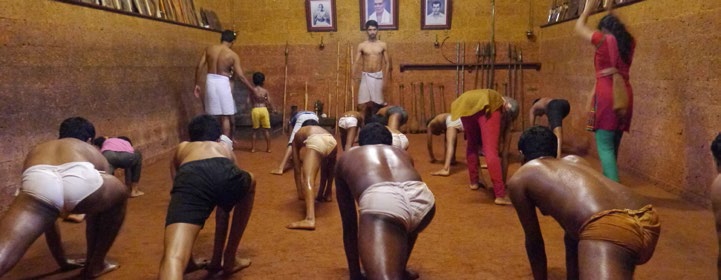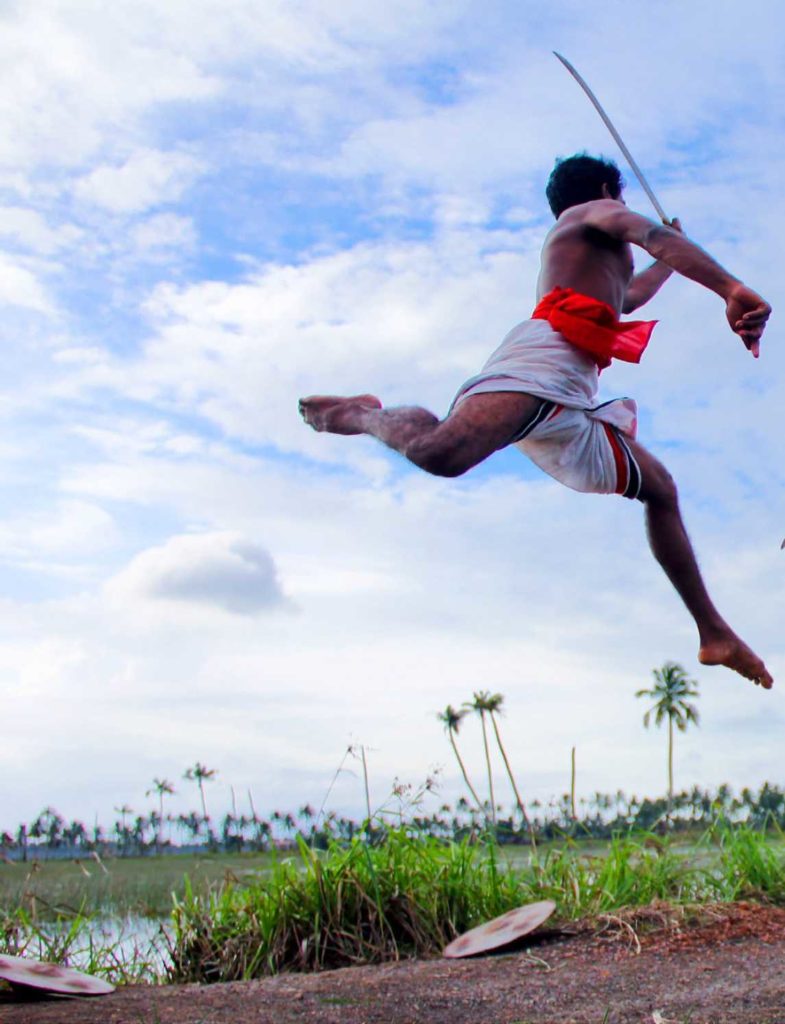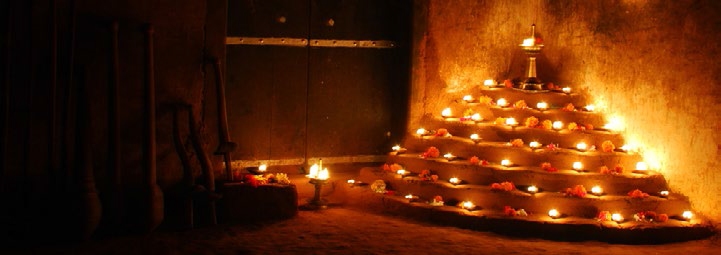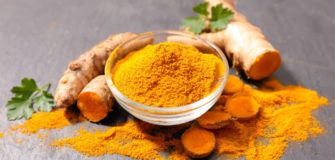Finding Fitness: Kalaripayattu

Having inspired the likes of Shaolin Kung Fu, it’s almost time we reclaimed the mother of all martial art forms – Kalaripayattu
BY DEEPTI DEEPAK VARMA
The modern man is well-versed with Taekwondo, Kung Fu, Karate, Jiu-Jitsu, and endless other martial art forms. But how many of us are aware of Kalaripayattu, one of the oldest existing fighting techniques in the world that has its origins in Kerala? More than self-defense, how many of us know that Kalari is also a state of being, a state of wellness? Thanks to films like Asoka, Oru Vadakkan Veeragatha, Thacholi Othenan, and the like, some of us have seen our favorite stars swish their swords and move their bodies to their minds’ rhythm.
Kalaripayattu’s genesis can be traced back to early Tamil Sangam Literature dating back as early as the 3rd century BC in the northern Malabar region of Kerala. Kalaripayattu has inspired many other martial art forms, including traditional Chinese martial arts. In fact, Bodhidharma, the acclaimed Indian Buddhist monk, and the creator of Shaolin Kung Fu are said to have drawn inspiration from Kalaripayattu. “Even though it is a discipline, Kalaripayattu, essentially, is a form of warfare,” says SR D Prasad, the guru of Sree Bharath Kalari, Kannur. “It is the defensive art of Kerala.
“Even though it is a discipline, Kalaripayattu, essentially, is a form of warfare. It is the defensive art of Kerala. It is Kerala’s own martial tradition. “
SR D Prasad

It is Kerala’s own martial tradition.” Famously known as the Orient’s treasure trove, the graceful yet sharp moves of Kalaripayattu draw inspiration from the prowess and strength of the magnificent wildlife, like the lion, tiger, and elephant. Kalaripayattu prescribed the battle code of the Cholas, Cheras, and Pandyas. Shrouded in clouds of secrecy, it was taught by the masters far from the vicinity of the human population, in secluded areas. Despite its ancient roots and historical significance, the sad truth remains that this martial art has sunken to become a dying art form. We’ve all seen the swift moves and high jumps in films, but what does it mean to actually practice the art of Kalaripayattu? The basic learning experience by itself can transform you to the hilt, and the best part? You’re never too old to begin learning! Yes, you heard that right. However, one must keep in mind that the benefits derived from practicing the art form will be different for different age groups. Children who start learning at the age of 6 will benefit much differently when compared to an adult who starts learning the art form at midlife. What’s remarkable is that people above the age of 50 years can benefit for the most part through the pain-relieving ability of Kalaripayattu.
With the relaxing massages and oil treatments like uzhichil, Kalaripayattu’s links with therapeutic science are crystal clear. Uzhichil sessions make use of medicinal oils which aid bone-setting and even heal muscular injuries. Nowadays, people are caught up in humdrum routine work and tend to lead rather sedentary lifestyles. Between 9-to-5 jobs and household chores, fitness is a lost concept. Thanks to the holistic training nature of Kalaripayattu, the health benefits of sticking to a Kalari routine are many.
Acting as a catalyst, energizing one’s body and mind, Kalaripayattu engages the very core of your being and enables you to handle anxiety, stress, and fatigue in a better manner. By engaging your cores and increasing flexibility, it enhances aerobic capacity and blood circulation. As the leaps and moves in Kalaripayattu stretch out your entire body, it helps get rid of stress knots, cricks, and inherent muscle tissue pain. Practising Kalaripayattu also works wonders for the lymphatic system—a vital part of the immune system—by cleansing the body of toxins. After a tiring day, this can indeed be a huge relief. Making your body and mind more alert, energetic and confident, Kalaripayattu also improves one’s focus, concentration power, and accuracy. Most of the urban spaces practicing the art form blend together postures, full-body workout sessions, and acrobatics. In an introductory session to Kalaripayattu, one is familiarised with stances and postures, followed by sessions of maipayat (body conditioning exercises), koltharipayattu (wooden weapons), ankatharipayattu (sharp weapons), and verumkai (barehanded defense techniques). Apart from increasing one’s dexterity and flexibility, practicing this age-old art also increases agility and suppleness. Super quick reflexes are definitely a bonus! Although training methods and techniques may vary depending on the guru, the elemental principles of the art form remain the same.
Once used as a method of fighting wars, now Kalaripayattu is viewed as much more than just a self-defense martial art form. Kerala’s iconic Kalaripayattu has, and is still emerging in a new avatar, as a source of fitness, wellbeing, spirituality, and more. Rightly hailed as the mother of all martial arts, it’s not too late for the urban Indian to pick up the Kalari way to fitness

















